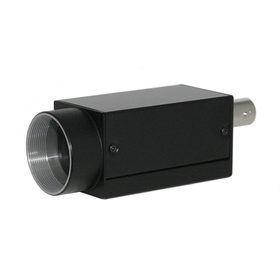●Presenting Materials● How to Effectively Utilize ROI to Maximize Frame Rate
We will introduce the ROI function of CIS cameras and its use cases that can be utilized for 3D inspection using light interruption methods and inspections that require high-speed takt.
The function that allows you to output only the necessary area from the images output by the camera is called ROI (Region Of Interest). By using the ROI function, it becomes possible to quickly read the necessary area, thereby increasing the achievable frame rate. This function is effectively utilized for 3D inspection using optical sectioning methods and inspections that require high-speed cycles. For customers considering 3D inspections or inspections that require fast processing, we will introduce the ROI function of our cameras and its application examples.
basic information
<ROI Utilization Example 1> Request: I want to secure about 100 pixels in the vertical direction and perform 3D inspection using a light sectioning method at high speed. Proposal: Use the ROI function to extract 100 pixels in the vertical direction for speed enhancement. - VCC-VCL5M (Effective pixel count 720 x 540 / Frame rate 523fps) → When the vertical resolution is reduced from 540 to 100 using the ROI function / Frame rate 2,101fps <ROI Utilization Example 2> Request: I want to capture long workpieces as quickly as possible. Proposal: Use the ROI function of a camera with a CoaXPress I/F that allows for high-speed transmission to extract only the necessary pixel count for speed enhancement. - VCC-25CXP1M (Effective pixel count 5120 x 5120 / Frame rate 82fps) → When the vertical resolution is reduced from 5120 to 480 using the ROI function / Frame rate 1,001fps For other utilization examples and details on the relationship between ROI settings and frame rates, please refer to the "ROI and Frame Rate Setting Examples" available for download from this page, or contact our sales department.
Price range
Delivery Time
Applications/Examples of results
3D inspection using light interruption methods, various inspections requiring high-speed processing, etc.
catalog(7)
Download All CatalogsNews about this product(1)
Recommended products
Distributors
CIS is a manufacturer of industrial imaging systems that consistently designs, manufactures, and sells various high-performance cameras, application products, and image processing IP. The applications of its products span a wide range, including machine vision (MV), security, medical, broadcasting, intelligent transportation systems (ITS), construction machinery, and food and pharmaceutical inspection, boasting numerous OEM adoption achievements. Leveraging features such as compact size, high speed, high performance, high reliability, and high quality, CIS continues to tackle advanced themes such as the latest digital interfaces, camera signal processing algorithms, image processing applications, and intelligent cameras, developing cutting-edge products. Focusing on embedded image processing development, CIS has developed the high-definition color image processing engine, Clairvu Engine. Additionally, the commercialization of cameras combining Clairvu Engine with 3G-SDI, HD-SDI, and CoaXPress is progressing, resulting in increased adoption. The company also has numerous development contracts for its licensing business, including algorithms and image processing software, which have been well received in the broadcasting industry, medical device industry, and construction machinery applications. Furthermore, it offers custom-designed piezo stages developed through its experience with pixel-shift cameras.























































